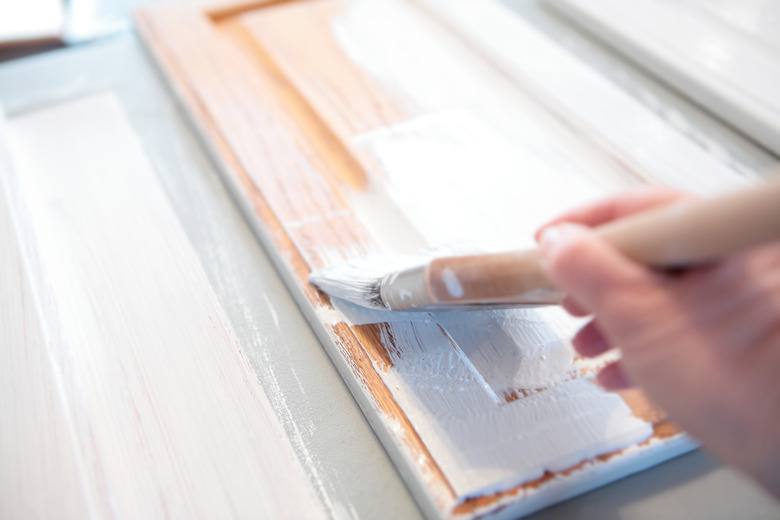How To Use Automotive Paint On Wood Cabinetry
If you are renovating your home and are hoping to repurpose old cabinets from the kitchen or bathroom, you might want to give them a fresh coat of paint. Rather than buy new paint, you might wish to use some automotive paint that you have on hand. Provided proper safety precautions are taken, this can be a decent idea. However, painting bathroom or kitchen cabinets with automotive paint is not advised if you plan to continue using the cabinets in these main parts of your home, where food is eaten and personal care is conducted.
Important Safety Considerations
Important Safety Considerations
If you plan to use automotive paint, you should do so in a well-ventilated area. If you will be removing cabinets from your kitchen or bathroom and installing them in a basement, garage or shed, be sure to paint the cabinets outdoors or in a large, ventilated space before you reinstall the cabinetry. In addition, do not use automotive paint when children or pets are nearby.
To protect your skin, you may wish to wear gloves while painting your cabinets. In addition, eye protection is always advised during a painting project.
Automotive Paint on Wood
Automotive Paint on Wood
If you plan to use automotive paint on plywood or real wood cabinets, you should be aware that it has a runnier consistency than many other paints intended for use in the home. As such, you will need to apply several thin coats of paint to your cabinets in order to obtain the coverage you would with traditional interior wall paints. On the plus side, this sort of paint has a very appealing high-gloss finish.
In addition, any veneer, laminate or varnish that is currently on your cabinets will be a poor match for automotive paint. Before you get started with painting, you should sand your cabinets with a rough sandpaper to remove some of the finish and create a better surface for the paint to grip. When you have finished, wipe down the cabinets to remove dust and grime.
Tape off the edges of your cabinets with painter's tape. Refer to the instructions on the specific painter's tape you choose for clarity, but most tapes require removal shortly after paint is applied. You should never leave painter's tape down when your paint is dry, as removing it then tends to tear your paint.
Applying Automotive Paint to Cabinets
Applying Automotive Paint to Cabinets
Ideally, you should use a primer on your cabinets to further prepare them. An oil-based primer, which typically has a very strong smell, is a good choice because it adheres well to laminates and other surfaces that are slightly glossy. Latex primers can peel in sheets, so they aren't the best choice for cabinets with any kind of sheen.
Apply automotive paint in thin coats over your cabinet doors, taking care to smooth brush strokes as you go. Since this paint is so thin, bristle marks and other imperfections will be very noticeable. You should allow plenty of time for paint to dry in between each coat. Refer to the manufacturer instructions for details, but, ideally, paint should have at least three hours of dry time.
Once you feel your paint job has achieved the look you prefer, and all paint is dry, clean up your workstation and remount the cabinets. Wipe down the finished cabinets with a wet cloth to remove any paint flakes or debris.
